
[316] Sitta europaea, Nuthatch
Certhia familiaris, Treecreeper
Introduction
Sitta europaea,the Nuthatch, and Certhia familiaris, the Treecreeper, are two species of woodland birds that spend most of their lives in trees. One climbs upwards and one climbs downwards.
All of the species of Sitta are called Nuthatches, and all the species of Certhia are called Treecreepers, so formally, Sitta Europaea is the Eurasian Nuthatch or Wood Nuthatch, and Certhia familiaris is the Eurasian or Common Treecreeper.
Taxonomy
Kingdom – Animals
Phylum – Chordates
Class – Aves (Birds)
Order – Passeriformes
Superfamily – Certhioidea
Family – [A] Sittidae: [B] Certhiidae
Genus – [A] Sitta; [B] Certhia
Scientific Name – [A] Sitta europaea; [B] Certhia familiaris
Following DNA analysis, which comes up many times in these blogs, the superfamily Certhioidea only came into existence a few years ago. It contains just five families:
- Sittidae – See below.
- Certhiidae – See below.
- Wrens, and two other small, fairly obscure small groups.
Names
The name Nuthatch, used since 1350 may be cognate with nut-hatch, or nut-hack, coming from their habit of wedging something like a nut in a crevice in a tree and hacking at it with their bills. They have also been called nuthackers, nutjobbers and nutpeckers in the past.
The Ancient Greek sitte was a bird of some sort, probably the nuthatch; kerthios was a small bird that might have been a treecreeper.
[A] Nuthatch
The Sittidae family only contains the genus Sitta. There are about 35 species, more or less geographically separated, with some uncertainty about superspecies and subspecies.
All are broadly similar in appearance with some variation in size and coloration.
They have developed the ability to crawl down the trunks of tree or to hang underneath branches. They can also climb upwards.
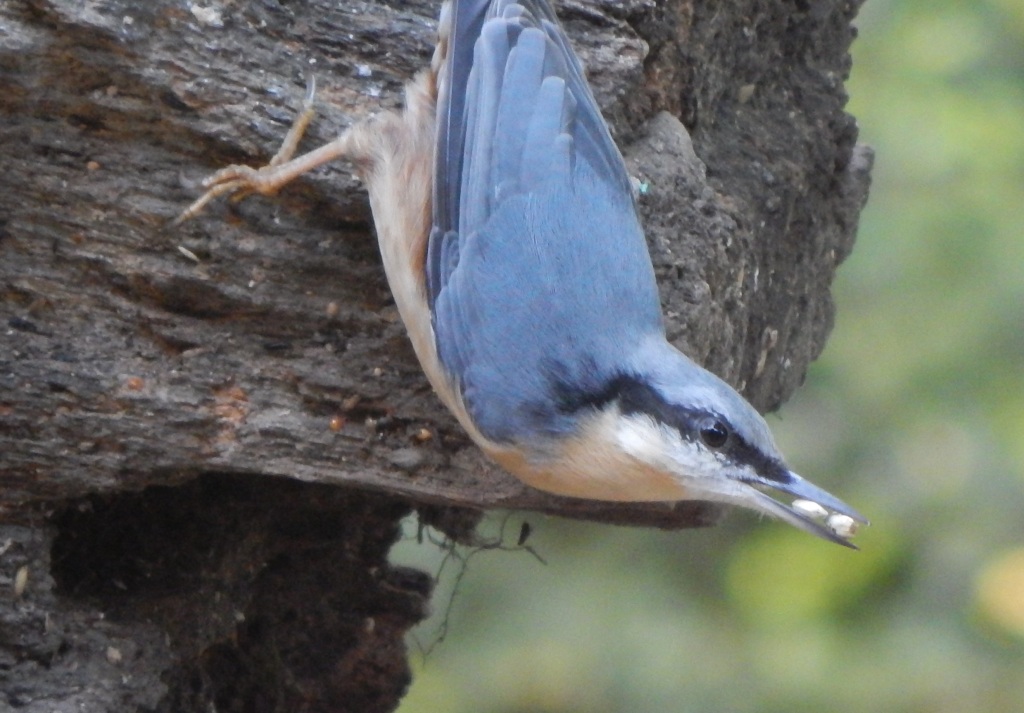
What follows is specific to our local species.
Sitta Europaea is found roughly over temperate Eurasia, including Britain but not Ireland. It has about twenty regional subspecies with minor differences of coloration, but there is disagreement about precise definitions. The subspecies Sitta europaea caesia, within the caesia subspecies group, covers most of western Europe including the UK. (The Latin caesia can mean a blue-grey colour.)
It is described as having blue-grey upperparts and underparts from orange-buff to brick red. It’s basically blue on top and peachy pink underneath. It has a long, thick, horizontal eye-stripe and white chin immediately underneath. The female is very similar to the male with paler underparts. It often holds it head up so that the top of its body is like a straight line from the tip of the tail to the tip of its long powerful bill. Underneath, the pink body is dome shaped.

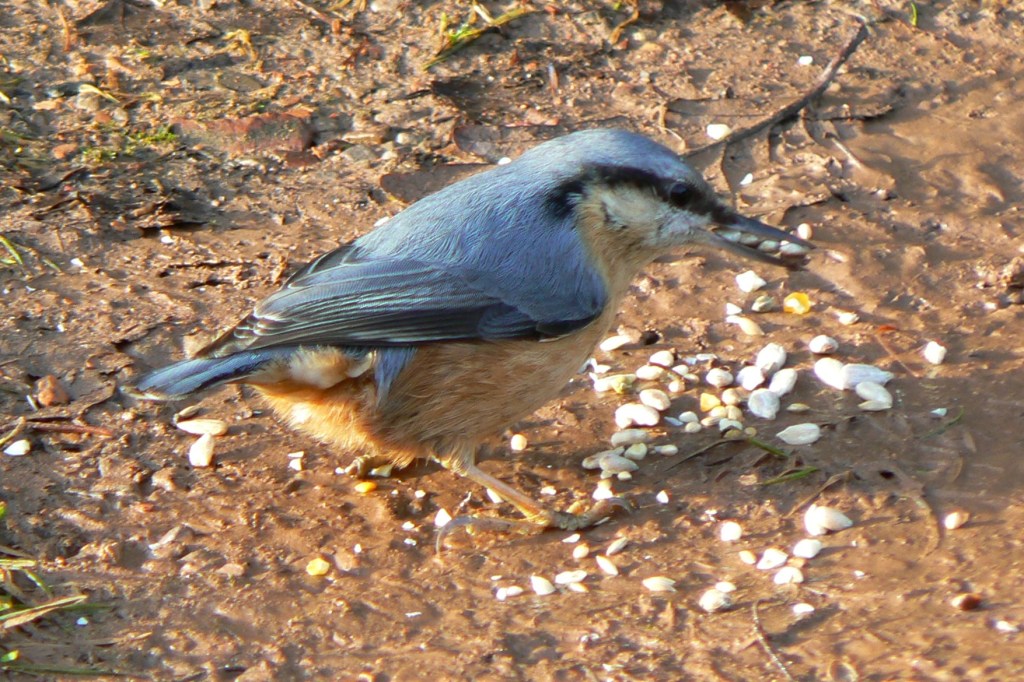
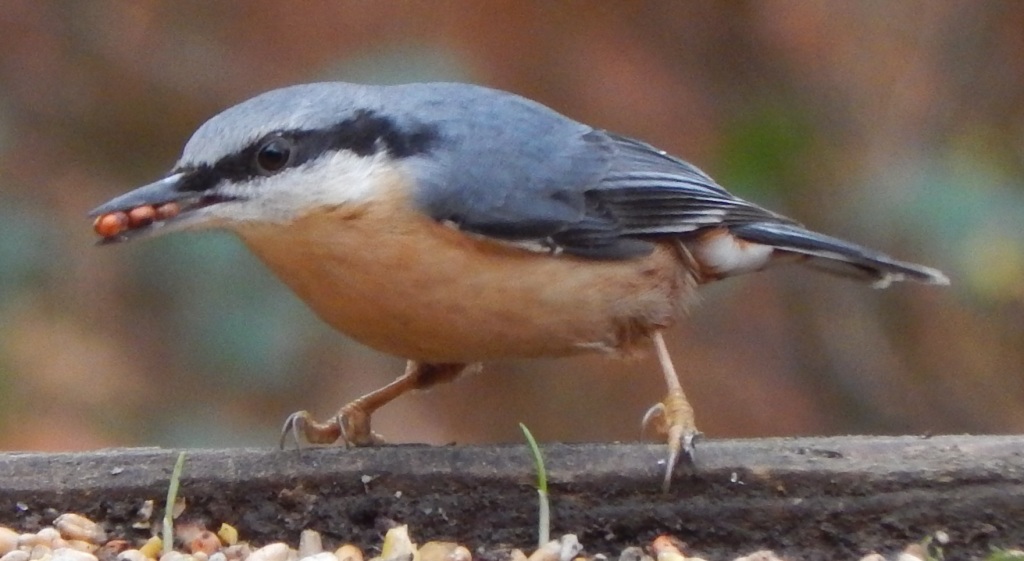
Their preferred habitat is deciduous woodland and they nest in holes in trees – usually old woodpecker nests.
They mainly eat insects that they find in trees, especially caterpillars and beetles. They will visit rural birdfeeders, where they will collect seeds.
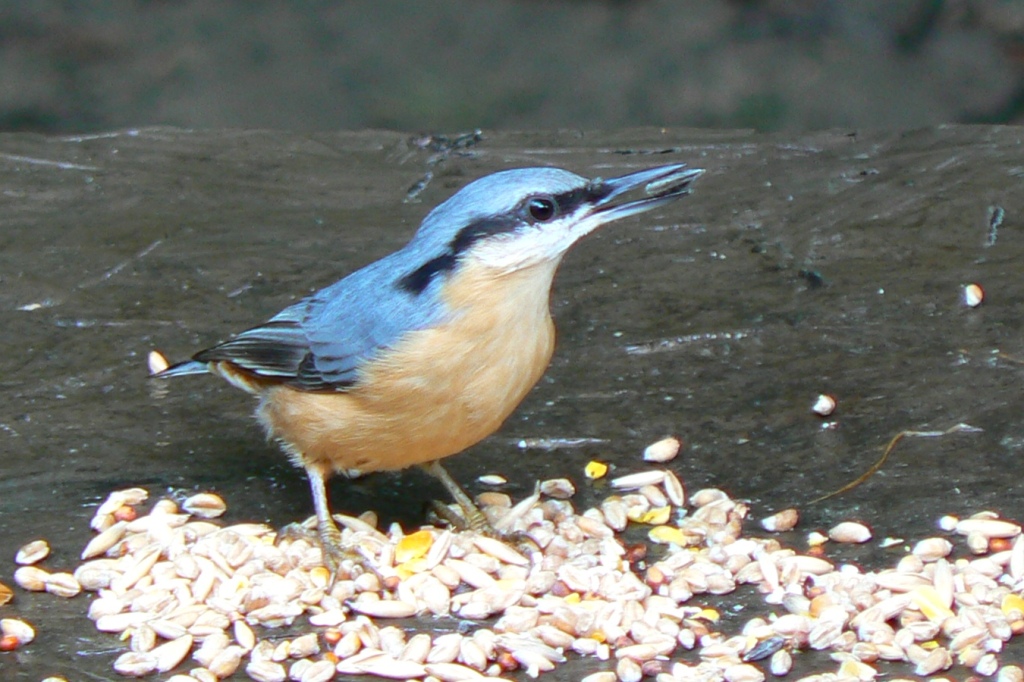

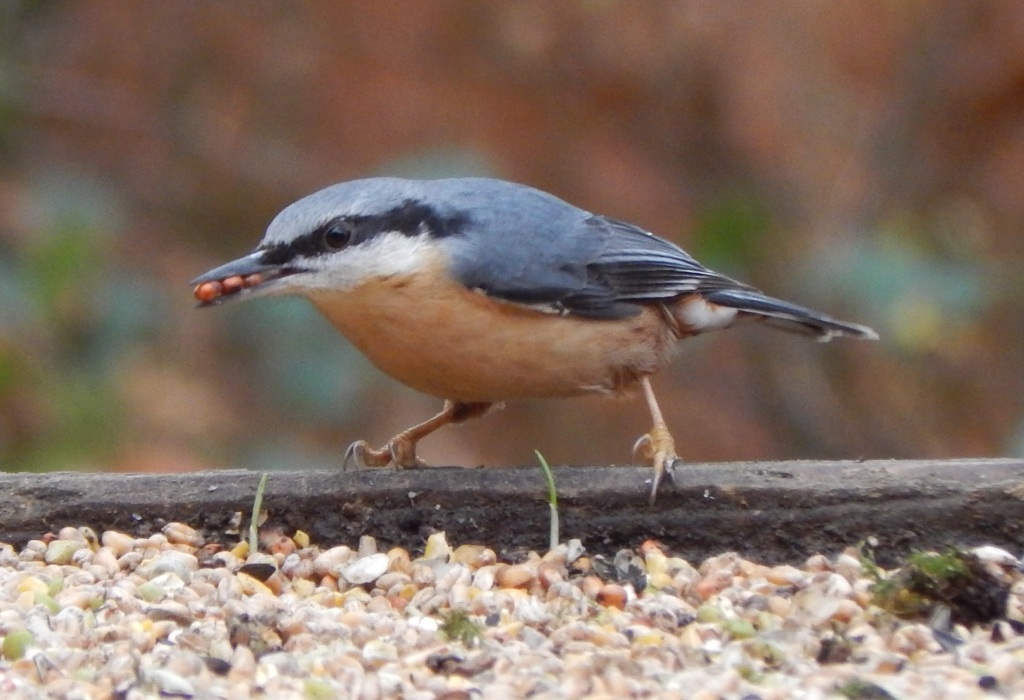
[B] Treecreeper
The family Certhiidae contains just two genera (generally each allocated to its own subfamily.) There are nine species of Certhia called Treecreepers, all looking very similar, and two Spotted Creepers in the genus Salpornis. This may come as a bit of a surprise but the species of Salpornis look very similar to Certhia, but spotted!
They generally climb up trees in a spiral path. You may spot them flying from a tree they have finished to the next tree.
Again, I will concentrate on our local version.
With some overlapping with other similar species, Certhia familiaris, the (Eurasian) Treecreeper, has a range stretching across Eurasia from the UK to Japan. It is almost always resident. It is found throughout Britain, where it is just called a Treecreeper. It is found in woodland and in Britain prefers deciduous woods to conifers.
Its back is a mottled brown that provides excellent camouflage. You are unlikely to find one unless you see it flying briefly between trees. You then have to follow it as it hops along branches and around trunks. They are very difficult to photograph because they never seem to stop moving.

This is taken as the bird climbed up a wall at Slimbridge. This is unusual behaviour. I have seen them several times on trees but this my best picture.
They extract insects and spiders from crevices in the bask as they climb up trees – always flying from the top of its path to the bottom of the next tree.
Other Notes
I tend to think of Nuthatches as much more common than Treecreepers, but perhaps that is because they are more visible. They are larger, more colourful, often recognized from their various calls, and not averse to visiting country bird feeders. Tree creepers camouflage well and are not distracted by birdfeeders.
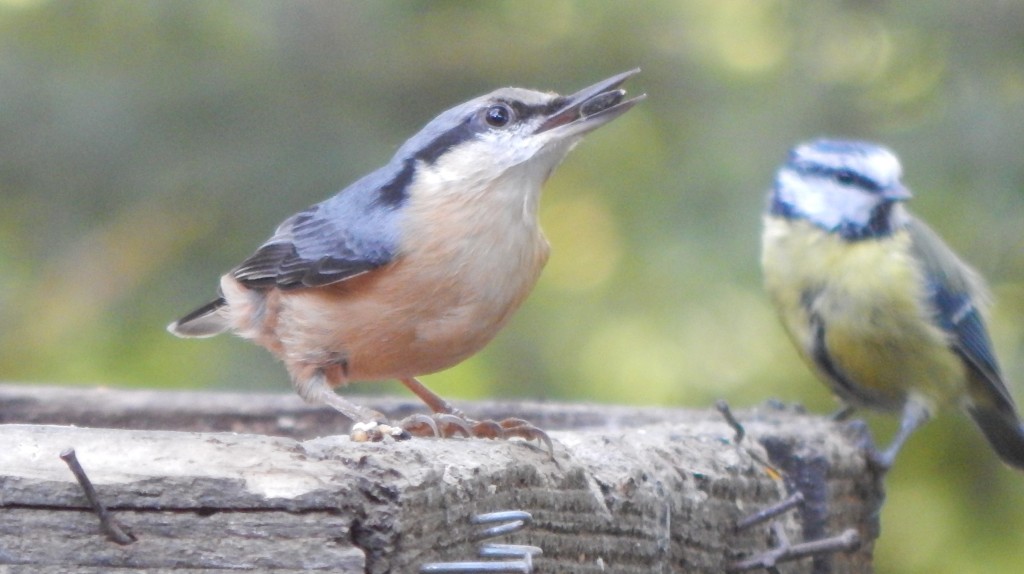

See also
Certhioidea is a very small superfamily. Apart from Nuthatches, Treecreepers and two very small obscure groups, it just contains the family of Wrens.
Troglodytes troglodytes, the (Eurasian) Wren, is one of the two most common British birds. They are common and widespread and may be found in parks and gardens. They are small, brown and inconspicuous and tend to remain under cover or fly very close to the ground.
You may never have seen a Wren but you have definitely heard one. For one of our smallest birds, they have one of the loudest voices. You may hear them every day without knowing.
Their song is a pattern with several sections including a distinctive trill. Once you learn to recognize it you will hear it everywhere in Europe. The Wren also makes a clicking call that you may hear.
